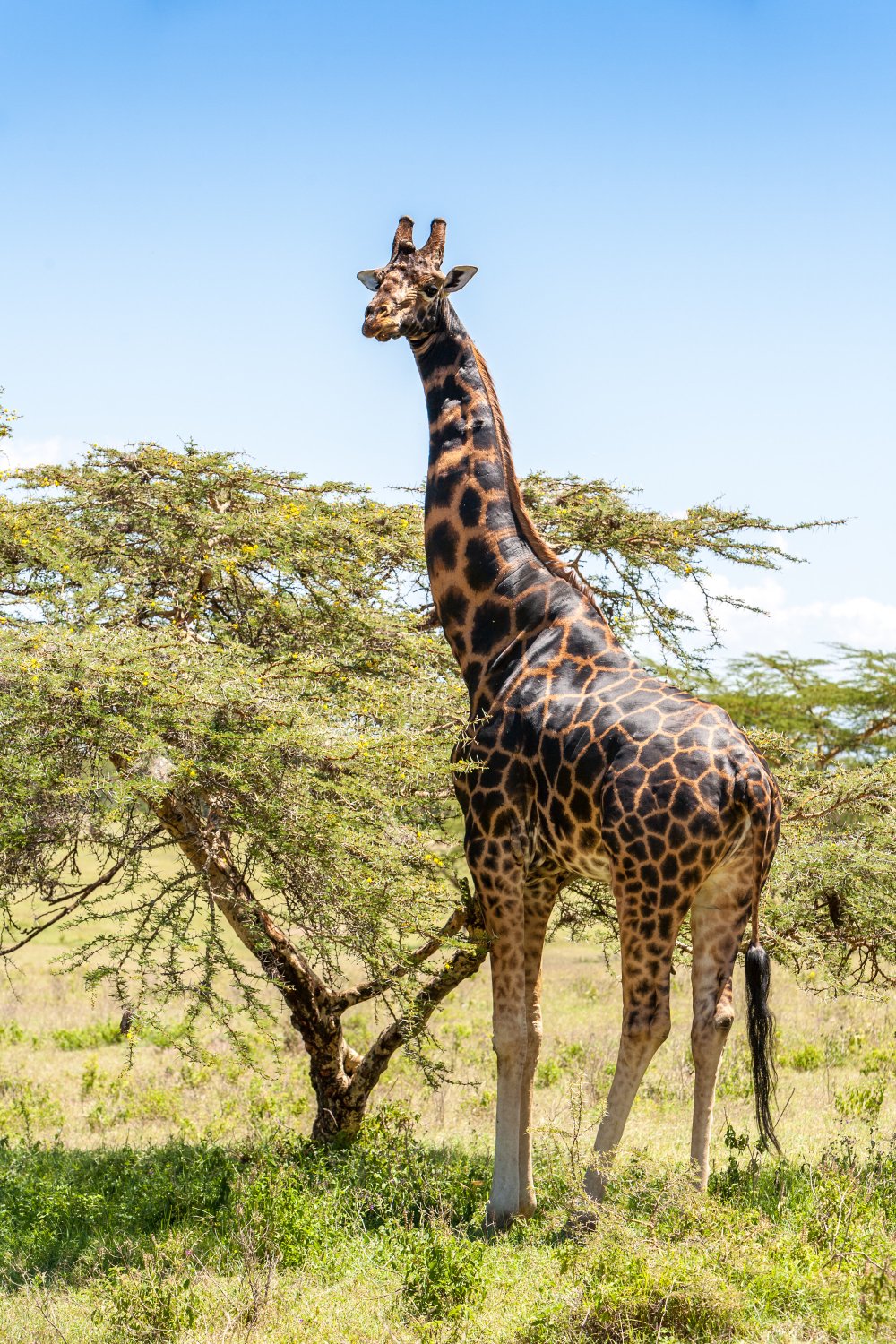Rwanda is located in central Africa and has much history and natural beauty. There are many interesting sights to see, with many guided tours to choose from. There are expeditions to places like volcanoes, waterfalls and rainforests which are home to many different African animals.
Rwanda is home to a huge diverse population of animals including gorillas and the largest natural park for Hippos – some 20,000 are believed to be there.It is landlocked, surrounded by Uganda to the north, Tanzania to the east, Burundi to the south, and the Democratic Republic of the Congo to the west.
Found in eastern Rwanda, along the Tanzanian border. It was founded in 1934 to protect animals and vegetation in three eco-regions: savannah, mountain and swamp. The park is named for the Kagera River which flows along its eastern boundary feeding into several lakes the largest of which is Lake Ihema. Much of the savannah area of the park was settled in the late 1990s by former refugees returning after the end of the Rwandan Civil War. Due to land shortages, in 1997 the western boundary was re-gazetted and much of the land allocated as farms to returning refugees. The park was reduced in size from over 2,500 km² to its current size. Although much of the best savannah grazing land is now outside the park boundaries, what remains of Akagera is some of the most diverse and scenic landscape in Africa.

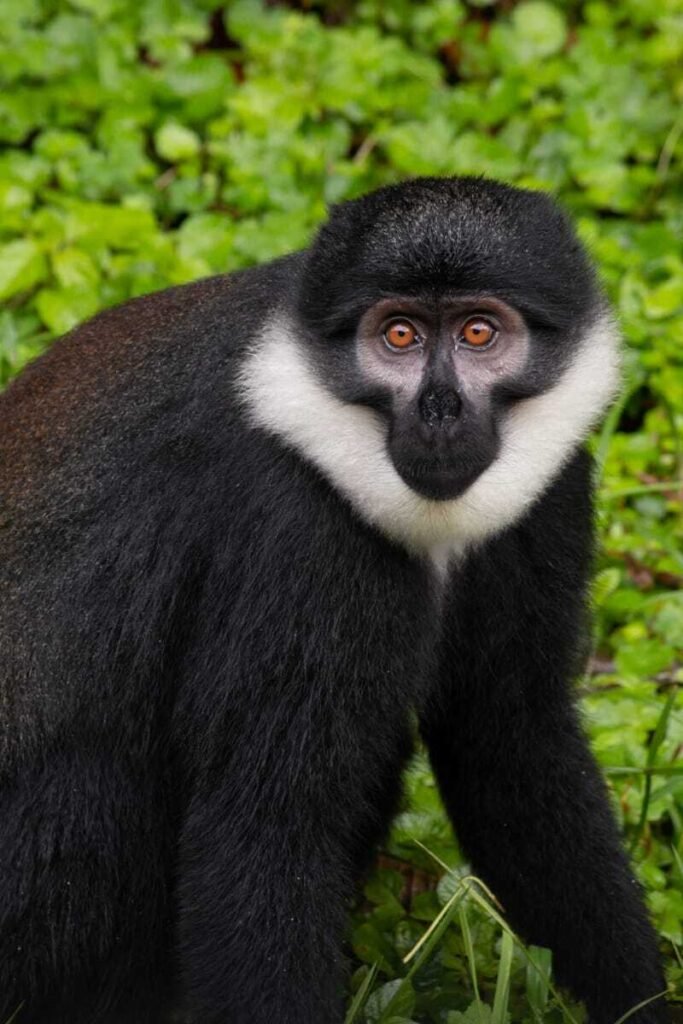
The rainforest is placed in the southwestern Rwanda, at the border with Burundi, south, and Lake Kivu and the Democratic Republic of the Congo to the west. Nyungwe rainforest is probably the best preserved rainforest in the mountains throughout Central Africa. It is located in the watershed between the basin of the river Congo to the west and the basin of the river Nile to the east. From the east side of the Nyungwe forest comes also one of the branches of the Nile sources. Nyungwe forest has a wide diversity of animal species, making it a priority for conservation in Africa. The forest is situated in a region where several large-scale bio-geographical zones meet and the variety of terrestrial biomes provide a great span of microhabitats for many different species of plants and animals.The park contains 13 different primate species (25% of Africa’s total), 275 bird species, 1068 plant species, 85 mammal species, 32 amphibian and 38 reptile species. Many of these animals are restricted-range species that are only found in the Albertine Rift montane forests ecoregion in Africa.
Volcanoes National Park lies in northwestern Rwanda and borders Virunga National Park in the Democratic Republic of Congo and Mgahinga Gorilla National Park in Uganda. The national park is known as a haven for the mountain gorilla. It is home to five of the eight volcanoes of the Virunga Mountains (Karisimbi, Bisoke, Muhabura, Gahinga and Sabyinyo), which are covered in rainforest and bamboo. The park later became the base for the American naturalist Dian Fossey to carry out her research into the gorillas. She was murdered by unknown assailants at her home in 1985, a crime often attributed to the poachers she had spent her life fighting against. Fossey’s life later was portrayed on the big screen in the film Gorillas in the Mist, named after her autobiography. She is buried in the park in a grave close to the research center, and amongst the gorillas which became her life.


Uganda is the second most populous landlocked country. The southern part of the country includes a substantial portion of Lake Victoria, shared with Kenya and Tanzania, situating the country in the African Great Lakes region. Uganda also lies within the Nile basin, and has a varied but generally equatorial climate.
With over 30 indigenous languages spoken, Uganda has been a hotbed of cultural diversity since its creation. Uganda was very challenging with wild nature, wilderness filled with a collection or herds the animals plus the various sounds of birds chirping and chatters of wild monkeys in the forests. It promises adventure like no other.
This impenetrable park is positioned in south western part of Uganda on the edge of the western rift valley or commonly known as the albertine rift. Bwindi Forest is the base of the last remaining mountain gorillas, it is very famous for mountain gorilla trek safari trekking or tracking.
This impenetrable park is positioned in south western part of Uganda on the edge of the western rift valley or commonly known as the albertine rift. Bwindi Forest is the base of the last remaining mountain gorillas, it is very famous for mountain gorilla trek safari trekking or tracking.
Murchison falls national park is perhaps the largest park in Uganda which is named after the Murchison falls where the mighty river Nile bangs through a narrow gorge flowing down to be converted into a placid river whose banks are thronged with hippos, water bucks, crocodiles, and buffaloes.
Queen Elizabeth national park along with kyambura and kigezi wildlife resource brings together the most diverse ecosystem in Africa.Thousands of hippos populate these water shores. Open savannah dotted with acacia and euphobia trees provide habitat for,leopardsm, elephants, lions, Uganda Safari kobs, in addition to big herds of buffaloes.The park also harbors primate species, ten in number which include chimpanzees and monkeys.
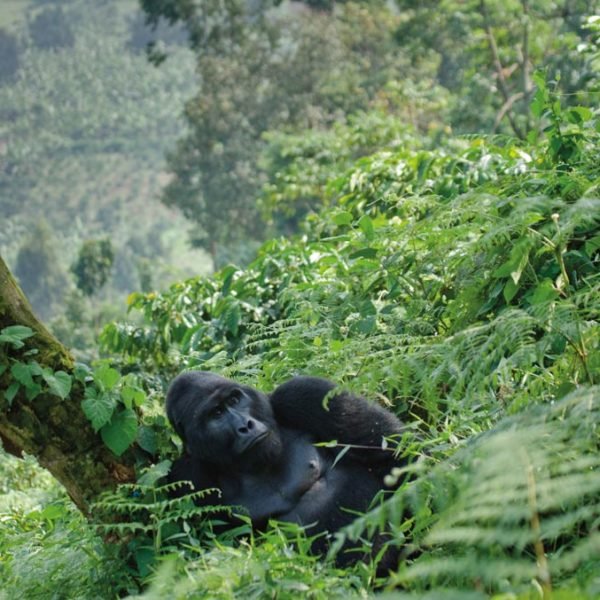
Kidepo valley is one of Uganda’s most spectacular parks. This national park is 1,442 square kilometers. Kidepo harbors scenery that can not be found in any other parks in east Africa. Kidepo is tucked into the corner of Uganda’s boarder with Sudan and Kenya.
Semliki, in advance known as the Toro Reserve, lies near the northern base of the Ruwenzoris in Uganda. The rich habitat of grassland, savannah, forest and wetland is home to diverse fauna, in addition to 400 bird species and 300 butterfly species.
Mt. Elgon is an extinct volcano that first erupted more than 24 million years ago. With the largest surface area of any extinct volcano in the world (50 km by 80 km)

Kenya is one of Africa’s most popular destinations with good reason. Kenya’s top attractions include Game safari destinations, trekking, beaches and towns. The Annual Migration of Wildebeest and Zebra in East Africa is one of nature’s biggest spectacles. Kenya’s Best Wildlife Parks and Reserves include the Masai Mara, Tsavo, Amboseli, lake Nakuru National parks and more.
Kenya is Africa’s most popular safari destination because of its abundance of wildlife, beautiful landscapes and cultural riches. Best sellers include Masai Mara safaris with local Maasai guides, relaxing beach holidays in Lamu & the Kenya coast, & Mount Kenya climbs. Travel through the Great Rift Valley & visit Lake Naivasha, Lake Nakuru & Bogoria, Sambur & Buffalo Springs, or visit outstanding community based safaris in Amboseli.
Masai Mara-Serengeti ecosystem and home to the famous wildebeest migration, it offers the most dramatic game viewing and widest range of safari experiences. It’s where to go in Kenya for hot air balloon flights, action-packed game drives, cultural interactions and guided nature walks in private conservancies – no wonder it’s one of the world’s greatest travel destinations.
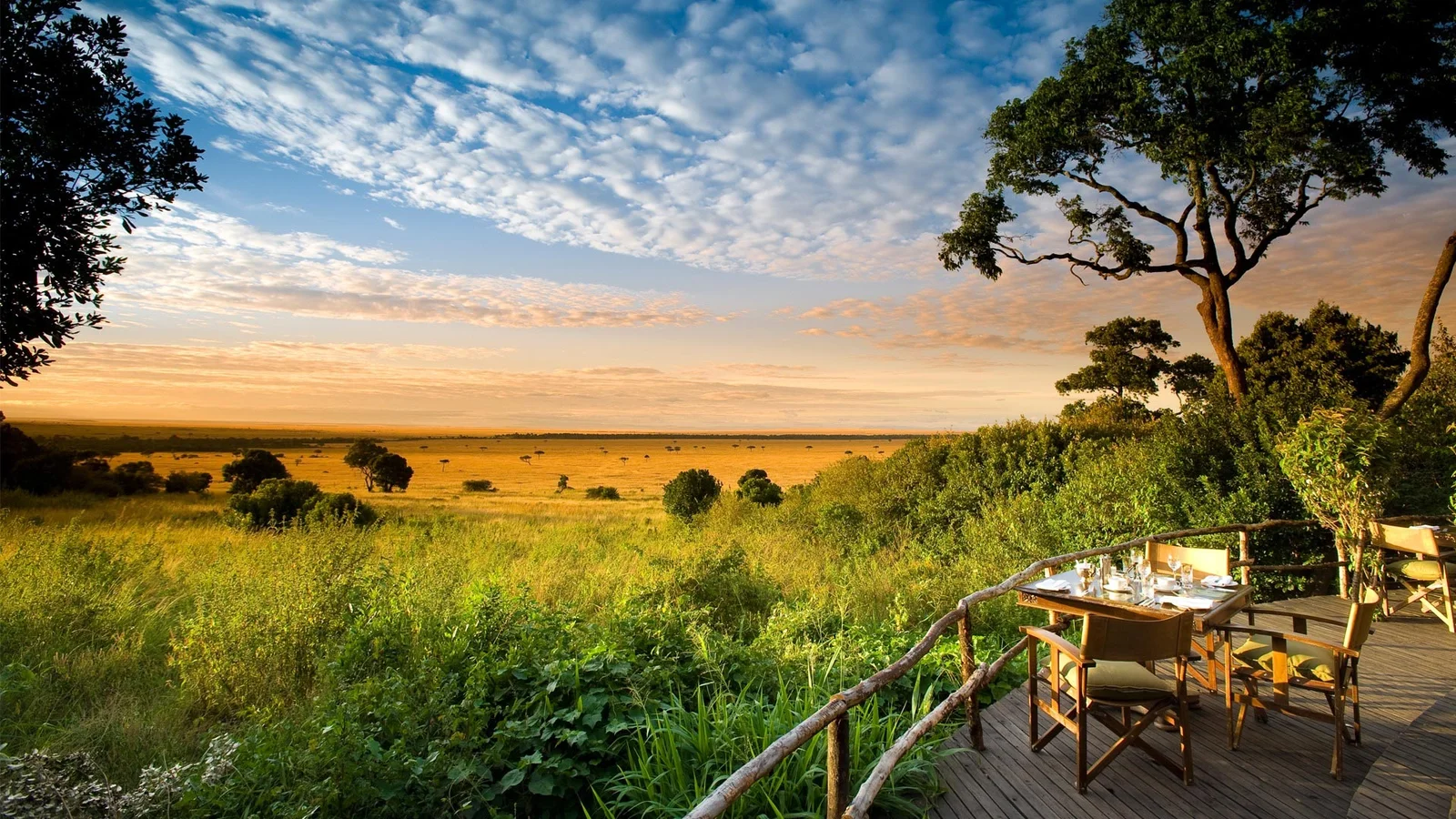
With all the attention on Kenya’s safari destinations, it’s easy to forget that the country has a dazzling tropical coastline. Mainland Mombasa is a popular family choice for got-it-all beach resorts but ask us about Kenya’s more exclusive mainland beach lodges where the accent is on exclusivity, luxury and indulgence.
Scuba diving and snorkeling on pristine reefs, sunset dhow cruises and swimming with dolphins – the unspoilt Lamu Archipelago combines all the elements of a fantastic beach holiday and is a perfect add-on to a Kenya safari or as a sensational honeymoon destination.
Amboseli is where to go in Kenya to get classic views of Mount Kilimanjaro, ironically situated across the border in Tanzania. There’s great big game viewing as well – especially around the Amboseli’s wetland areas – although it’s a popular and busy park at the best of times so expect to share your sightings with other visitors.
Kenya’s largest national park offers visitors the chance to spot wildlife in a far wilder and less visited environment than the more famous Masai Mara or Amboseli. The variety of habitats means a great diversity of birds and mammals and it’s only a couple of hours drive from Kenya’s coast, making for easy safari and beach holidays.
Laikipia Plateau destination lies north of Nairobi on the rim of the Great Rift Valley. An area of thriving private reserves, luxurious family-friendly accommodation and huge honeymoon views, Laikipia is a must-do for those who want an air of exclusivity and a diverse Kenya safari experience away from the crowds.
Africa’s second highest peak, the 5200m Mount Kenya looms over much of the region which includes great wildlife destinations such as family-friendly and multi-activity Meru National Park, the private Lewa Downs Conservancy in the foothills of Mt Kenya, the Mount Kenya National Park and the amazing forests of Aberdares National Park.
Home to a shallow soda lake, Nakuru is the place to go for the best chance to see Kenya’s famous flocks of flamingos but there’s game viewing too around the lake shores. Rhino and hippo are among the heavyweights though bird watchers will be more interested in the 400 species of birds recorded here.

Tanzania is a country with many tourist attractions. More than 44 per cent of Tanzania’s land area is covered with game reserves and national parks. There are 16 national parks, 29 game reserves, 40 controlled conservation areas and marine parks.
Tanzania is also home to the famous Roof of Africa, Mount Kilimanjaro. Tanzania’s most well known tourist attractions are located in Northern of the Country and include Mount Kilimanjaro, Africa’s highest mountain. Serengeti National Park is world famous and has spectacular seasonal migrations of animals. The Ngorongoro Reserve is an extinct volcanic caldera with excellent game viewing from the crater rim. The reserve has large herds of wildebeest and zebra, and lions and the endangered black rhinoceros. Tourism is also focused on the coast, especially the islands of Zanzibar, Pemba and Mafia. Game fishing and diving are the main attractions in these islands. There is also a wide variety of destinations for cultural tourism such as Maasai boma and Bushmen settlements.
The Serengeti is known as one of the best wildlife sanctuary in the world, especially renowned for the migration of animals. Every year more than a million wildebeest and zebras travel through the park. A Serengeti Safari is a must for visitors of Tanzania.
Nestling at the base of the Great Rift Valley escarpment, the park is recognized for its incredible beauty. Wildlife at Lake Manyara is not restricted to birdlife only. You can see many game animals such as Buffalo, Elephant, Giraffe, Impala, hippo.
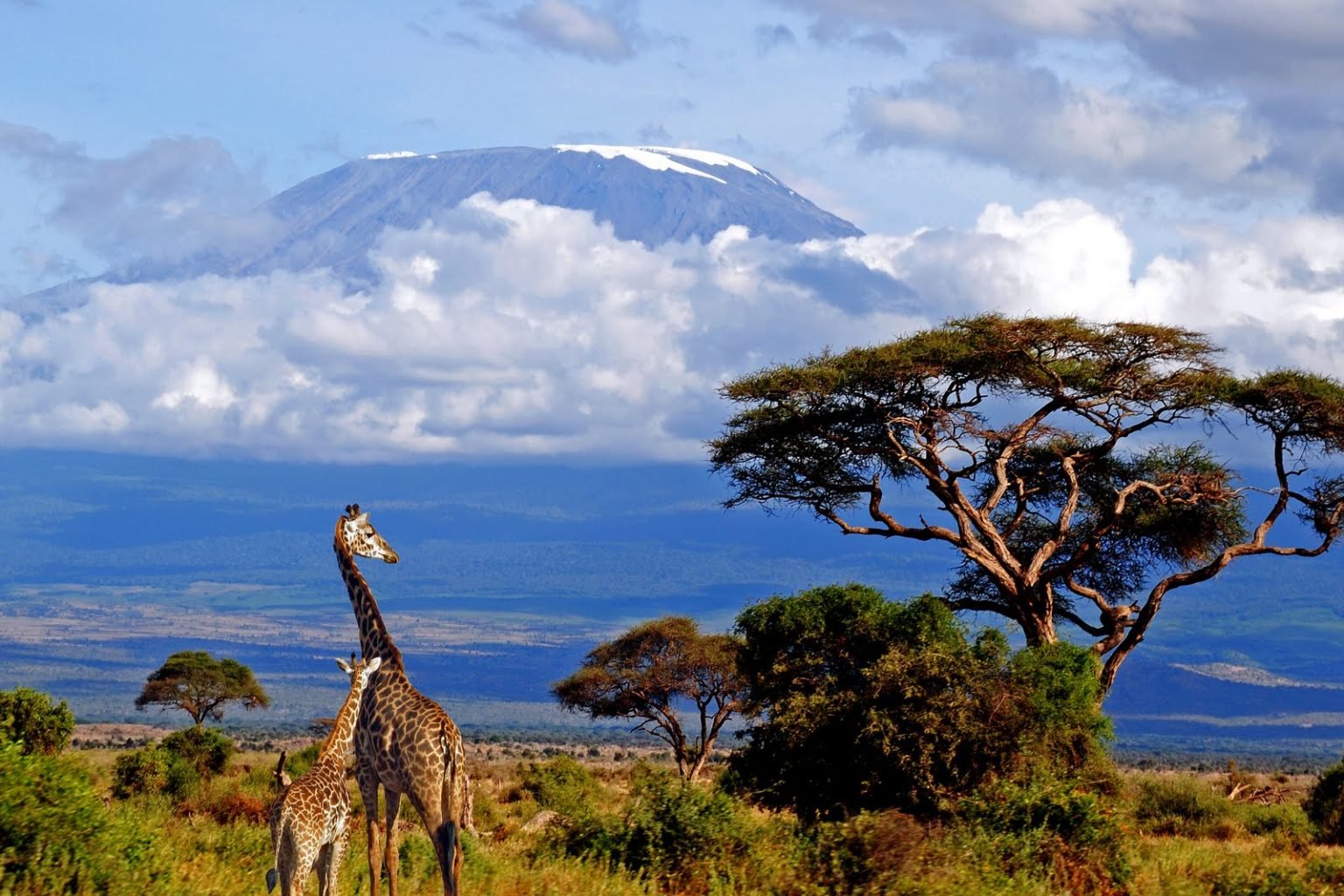
It is the vast number of baobabs that first capture the eye as you enter Tarangire National Park. The gently rolling countryside is dotted with these majestic trees, which seem to dwarf the animals that feed beneath them.
The Park on the foot of Mount Meru contains a diverse resident population of herbivores, primates and predators. It is not too spectacular, but It is just nearby Arusha.
Mount Kilimanjaro is the crown of Tanzania. With an altitude of 5895m (19 340ft), it is the highest peak in Africa, the highest freestanding mountain in the world, and one of the largest volcanoes.
Ruaha is visually a treat, with wild landscapes of miombo forest and rolling woodlands, hills, rivers and plains. The center of the reserve is the Great Ruaha River, with its deep pools and gorges, swirling rapids and excellent fishing.
This relatively small (3230 sq km) National Park lies 300 km west of Dar-es-Salaam and is the closest park to the capital. Although less spectacular regarding Flora and Fauna, the Mikumi national park obtains a good impression of the African animal world and is suitable for a short visit.
Tanzanias last established park contains the greatest altitudinal range of forests in East Africa – unbroken forest cover from lowland forest communities at below 250m above sea level to mountain communities at over 2,800m. Udzungwa National Park has one of the highest numbers of species endemism worldwide.
Rubondo major animal attraction is the abundance of sitatunga, an aquatic antelope that cannot be found in any other Park in Tanzania. Rubondo Island was declared National Park in 1977.. A protector to introduced mammal species, rare orchids and fish breeding grounds Rubondo is also more than just a watery wonderland.
Saadani National Park was only gazetted in 2003 and is the only park in Tanzania with ocean frontage. The park itself is unique to the rest of east Africa combining a variety of ecosystems including bush, beach and river.Some of the animals do come down to the beach and you can occasionally see some in the surf.
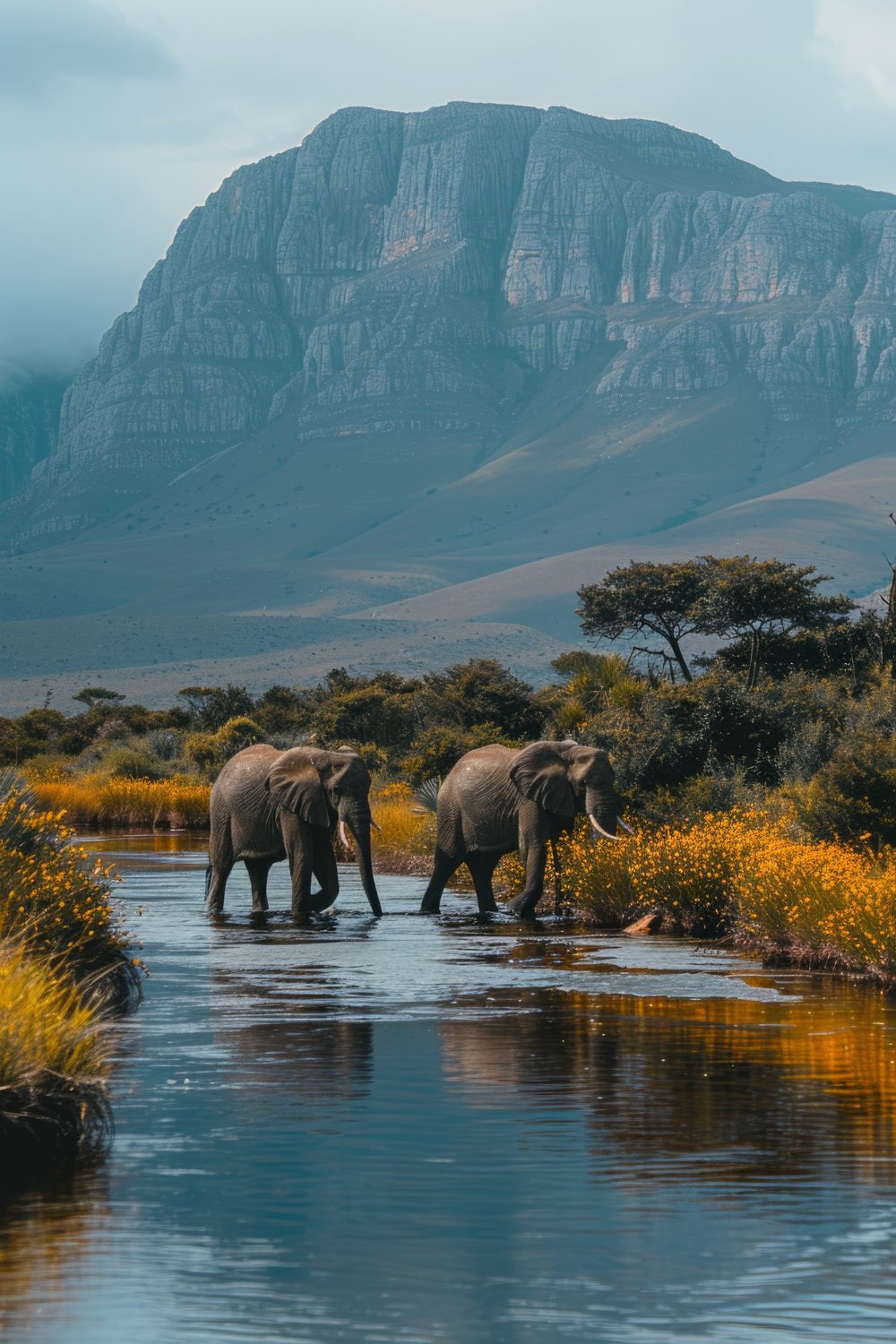
Remote and rarely visited, the Katavi national park is a pearl among the national parks in Tanzania. Tanzania third biggest national park lies in the remote southwest of the country, and it has a higher density of mammals than any other Tanzanian National Park. Rivers groan with hippopotamus and crocodiles, and schattered over the plains are great herds of buffaloes.
Also called the eighth wonder of the world, this heritage center shelters the most beautiful wildlife haven on earth. Ngorongoro has over 20,000 large animals including some of Tanzania’s last remaining black rhino, protected within its rim.
Gombe Stream is Tanzania’s smallest park (52 sq km) and is home of the world famous chimp reserve. It is located 16 km north of Kigoma on the shore of Lake Tanganyika in western Tanzania.
